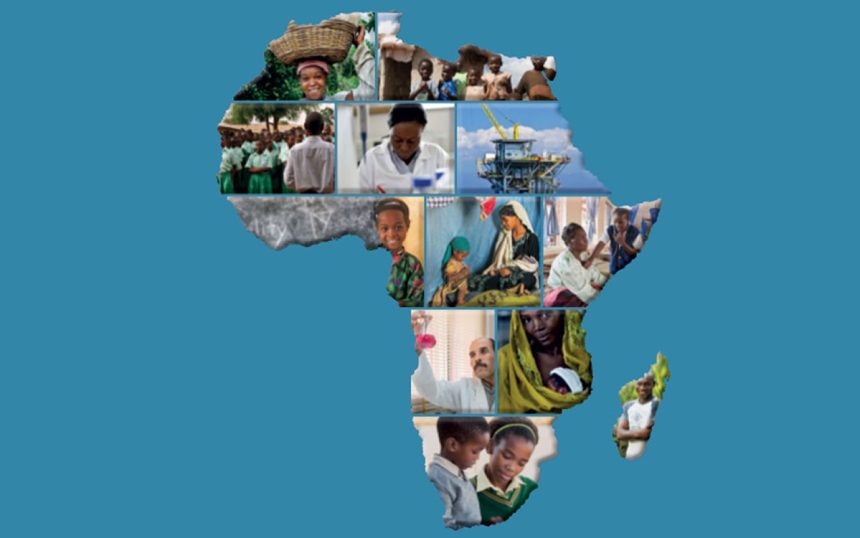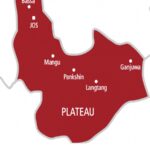Human development, according to the United Nations Development Programme (UNDP), refers to the process of providing people with more freedom and opportunities to live the lives they value. It’s not just about economic growth, but includes development in health, education, and standard of living, measured through the Human Development Index (HDI).

Over the decades, technology has played a pivotal role in accelerating human development. From the printing press to the internet, from antibiotics to medical imaging, our capacity to innovate has consistently reshaped societies. We have witnessed revolutions in medicine, communication, agriculture, and education—all powered by evolving technology.
Today, we stand at an inflection point in history; Moore’s Law has held like never before, and we have seen exponential growth in the technological space. In 2024, approximately 5.5 billion people used the internet, and the number of connected IoT devices grew by about 13% year-over-year (YoY), surpassing 18 billion. The global AI market is set to soar from $189 billion in 2023 to $4.8 trillion by 2033.
However, as innovation accelerates, an urgent question emerges: How can we ensure this progress leads to tangible improvements in people’s lives, especially in regions like Africa, which seems to lag in some aspects of human development? To answer this question, we first look at emerging technologies and their potential impact on human development, including real-world examples, then lay out necessary frameworks for these innovations to contribute positively to our social well-being as humans.
Potential Applications for Emerging Technologies in Africa
Breaking down each aspect of the HDI
- Health
Emerging technologies are reshaping healthcare by enabling early disease detection, more precise diagnosis and treatment, greater accessibility, and stronger data security. Biomedical advances also support innovations like targeted drug delivery.
More recently, Artificial Intelligence(AI) can analyze medical images, genetic data, and health records to detect diseases such as cancer, Alzheimer’s, and heart conditions at earlier stages. Combined with predictive analytics, mobile apps, wearables, and IoT devices, we can monitor vital signs in real time, identify at-risk individuals before symptoms appear, and deliver timely health advice and medication reminders.Telemedicine and drones are expanding access to care, vaccines, and medicines in remote and underserved regions, while blockchain is securing healthcare data and supply chains.
This transformation is already underway in some parts of Africa. Zipline delivers vaccines by drone in Nigeria, Ghana, and Rwanda to accelerate childhood immunization. In Uganda, healthcare workers use SMS to send weekly surveillance data, improving disease tracking and response. MediLedger in South Africa is enabling a secure, transparent medical supply chain.

To maximize impact, these efforts must be scaled and adapted across more regions of the continent. At the same time, more innovation is needed, new tools and ideas that fit the continent’s unique needs.
- Education
In education, emerging technologies offer practical ways to expand access, personalize learning, support teachers, and help governments allocate resources more effectively.
With the increasing use of mobile devices across Africa, mobile learning apps can deliver high-quality content to learners anywhere, provided they have internet access. When combined with AI, these platforms can adapt to each student’s learning style and pace. Tools like speech recognition, translation, and text-to-speech also help break down language and accessibility barriers. Virtual and Augmented Reality can create immersive learning experiences, especially when labs, equipment, or field trips are unavailable. Additionally, they can assist in teacher training. Meanwhile, big data and analytics can reveal learning gaps and risks, enabling decision-makers to target interventions and allocate resources more effectively.
We are already seeing this in action in Africa, but we want to see more awareness and positive attitude towards development and use of these tools. Kudos to Afrilearn in Nigeria which blends AI and gamification to deliver mobile learning. Additionally, Kytabu in Kenya is reimagining education with wearable devices for teachers, AI-powered multimodal learning for students, and intelligent dashboards for schools. In South Africa, Augmented Reality is transforming classrooms, while the Data Driven Districts project uses analytics to guide teaching interventions.
To unlock the full potential of technology in education, we must scale up these innovations and encourage more locally driven solutions across the continent.
- Standard of Living
Often viewed as the continent with the lowest standard of living, Africa can harness emerging technologies to tackle poverty, unemployment, and inflation. These tools can enhance financial inclusion, foster sustainable employment, enhance safety and sanitation, and boost incomes.
Mobile banking and digital wallets expand access to savings, credit, and cashless payments. Online platforms connect workers to remote jobs worldwide. IoT sensors monitor water quality and usage, while drones and satellite data support farmers before and during planting. Locally developed tech can also improve post-harvest storage. Solar mini-grids provide reliable electricity to off-grid communities. Civic tech and e-government tools enhance transparency, public participation, and access to services. Blockchain increases trust in land rights and trade.
Not to forget, M-Pesa in Kenya enables mobile money transfers; Solangigs in Ghana connects freelancers with local payments; Kraken in Nigeria also advances palm oil processing; Hello Tractor is linking farmers with vital machinery; solar mini-grids operate in Nigeria, Angola, Sudan, and Ethiopia; and Dokeza in Kenya promotes digital civic engagement.
While these innovations are impactful, scaling and replicating them across the continent is essential to improve living standards. Equally important is fostering new, homegrown technologies to fully leverage emerging innovations for Africa’s human development

Designed for Scaleand Sustainability
For technology to create lasting human development in Africa, it must follow proven frameworks:
- Problem-Oriented Design: Innovations must solve clearly defined local problems. Zipline delivers urgent health supplies. M-Pesa provides mobile banking to underserved populations. Kytabu addresses textbook access. Solving real problems ensures relevance and impact.
- Human-Centred Design: Tools must align with users’ daily realities. M-Pesa worked on basic phones. Afrilearn aligns with local curricula. Simplicity and familiarity drive adoption.
- Accessibility and Affordability: Innovations must be cost-effective and easy to use. Kytabu rents textbooks cheaply. M-Pesa uses USSD for even the most basic phones. Affordability ensures reach.
- Embedded Partnerships: Partnering with governments and communities accelerates adoption. Zipline works with health ministries; M-Pesa partnered with telecoms and local agents.
- Localization and Capacity Building: Solutions must be rooted in local context and empower local people. Hello Tractor trains farmers to use smart equipment. Zipline hires local staff. Localization builds trust and creates jobs.
- Adaptive, Data-Driven Growth: The most successful tech adapts over time. M-Pesa evolved into a full financial ecosystem. Afrilearn updates content based on feedback. South Africa’s Data-Driven Districts tracks real-time school data for better outcomes.
Conclusion
Technology can drive inclusion, progress, and dignity; but only when it’s intentionally aligned with human development goals. Africa faces urgent challenges and holds the ingenuity to solve them with emerging technologies. By investing in the right frameworks – solutions that are human-centered, affordable, and locally driven – we can ensure innovation delivers a real, lasting impact.
Short background
Taiwo Olatunde is a Data Science and AI/ML expert currently based in Texas, USA. With a multidisciplinary background in engineering and analytics, spanning degrees from the University of Ibadan, IFP School, France, and the University of North Texas, USA, Taiwo has applied deep learning and predictive modeling to real-world challenges, from geological imaging at Texas A&M to building AI-driven tools for cost optimization and education.
At NVIT in the US, Taiwo leads projects that leverage cloud technology, large language models (LLMs), and data science to address problems of broad societal relevance. His work blends technical rigor with strategic impact, exemplifying how data science and innovation can be harnessed to drive efficiency, insight, and meaningful societal change.
ALSO READ: Ijebu and their six tubers of yam
WATCH TOP VIDEOS FROM NIGERIAN TRIBUNE TV
- Let’s Talk About SELF-AWARENESS
- Is Your Confidence Mistaken for Pride? Let’s talk about it
- Is Etiquette About Perfection…Or Just Not Being Rude?
- Top Psychologist Reveal 3 Signs You’re Struggling With Imposter Syndrome
- Do You Pick Up Work-Related Calls at Midnight or Never? Let’s Talk About Boundaries






